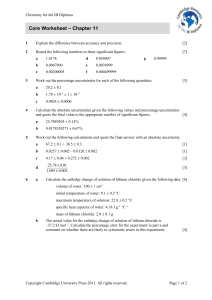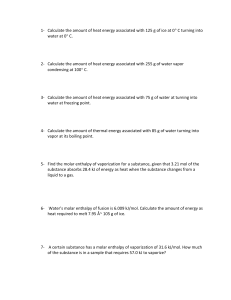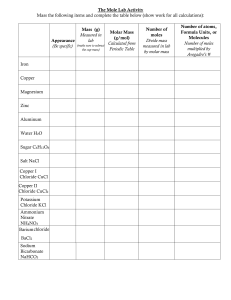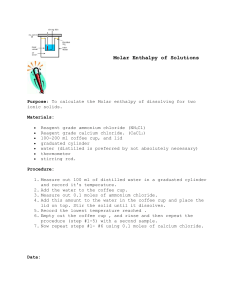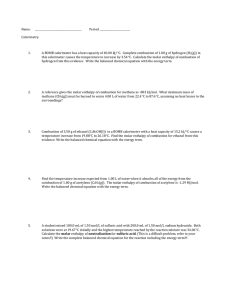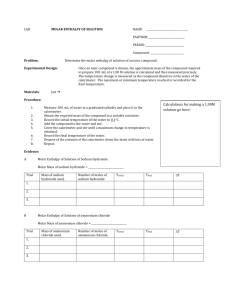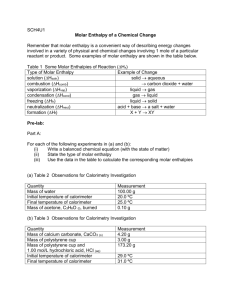Using Calorimetry to find molar enthalpies note
advertisement
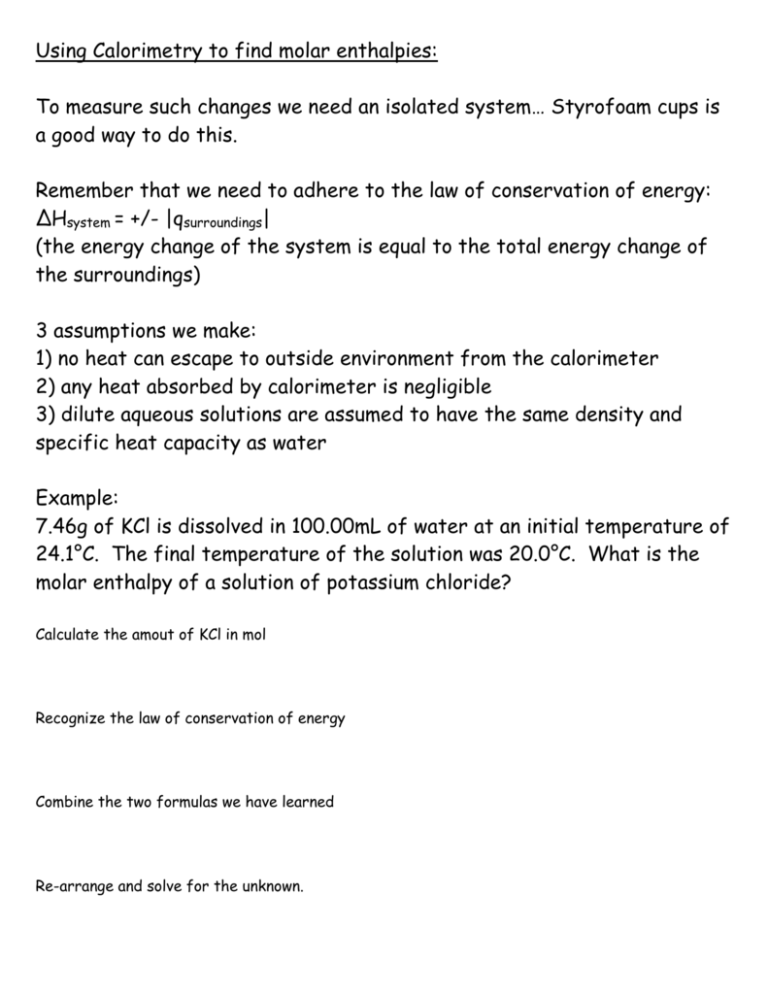
Using Calorimetry to find molar enthalpies: To measure such changes we need an isolated system… Styrofoam cups is a good way to do this. Remember that we need to adhere to the law of conservation of energy: ΔHsystem = +/- |qsurroundings| (the energy change of the system is equal to the total energy change of the surroundings) 3 assumptions we make: 1) no heat can escape to outside environment from the calorimeter 2) any heat absorbed by calorimeter is negligible 3) dilute aqueous solutions are assumed to have the same density and specific heat capacity as water Example: 7.46g of KCl is dissolved in 100.00mL of water at an initial temperature of 24.1°C. The final temperature of the solution was 20.0°C. What is the molar enthalpy of a solution of potassium chloride? Calculate the amout of KCl in mol Recognize the law of conservation of energy Combine the two formulas we have learned Re-arrange and solve for the unknown. Example: What mass of lithium chloride must have dissolved if the temperature of 200.0g of water increased by 6.0°C? the molar enthalpy of solution of lithium chloride is -37kJ/mol.
